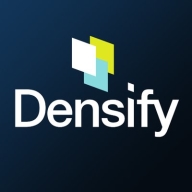

Densify and AWS Control Tower compete in cloud management solutions. AWS Control Tower appears to have the upper hand for its enhanced security and streamlined multi-account management, while Densify shines in resource optimization and cost efficiency.
Features: Densify provides advanced analytics, real-time optimization, and automatic resource adjustment. AWS Control Tower delivers centralized control with comprehensive governance, offers integration with other AWS services, and focuses on security and compliance.
Room for Improvement: Densify could enhance its user interface for more intuitive navigation, improve its prediction capabilities for better forecasting, and expand integration options with other non-cloud systems. AWS Control Tower may benefit from offering more flexible customization options, enhancing user training resources, and improving integration with third-party management tools.
Ease of Deployment and Customer Service: Densify is noted for seamless integration with existing cloud setups and personalized customer support which facilitates deployment. AWS Control Tower provides pre-configured guardrails and automation features for straightforward deployment across AWS accounts, with an edge in deployment automation.
Pricing and ROI: Densify is commendable for cost savings through resource optimization, enhancing ROI by reducing unnecessary cloud expenses. AWS Control Tower, despite potentially higher initial setup costs, is valued for comprehensive control features and security benefits, offering strategic long-term value and reducing operational overhead and risk.
| Product | Market Share (%) |
|---|---|
| AWS Control Tower | 1.3% |
| Densify | 0.9% |
| Other | 97.8% |


| Company Size | Count |
|---|---|
| Small Business | 9 |
| Midsize Enterprise | 2 |
| Large Enterprise | 7 |
| Company Size | Count |
|---|---|
| Small Business | 1 |
| Midsize Enterprise | 1 |
| Large Enterprise | 9 |
AWS Control Tower offers the easiest way to set up and govern a new, secure, multi-account AWS environment. It establishes a landing zone that is based on best-practices blueprints, and enables governance using guardrails you can choose from a pre-packaged list.
Densify is a hybrid cloud and container resource management platform that makes workloads self-aware of their precise resource requirements and automates the resource management and selection process. This solution helps you control your cloud spend and also helps your apps perform and scale better. Densify enables you to match your cloud requirements with the optimal cloud supply. Additionally, Densify is the only technology that leverages patented, predictive machine learning-powered analytics to perform advanced modeling of workload patterns, and provide precise optimization directives. It is ideal for cloud engineers, container platform owners, and IT finance.
Densify works by:
Densify Features
Densify has many valuable key features. Some of the most useful ones include:
Densify Benefits
There are many benefits to implementing Densify. Some of the biggest advantages the solution offers include:
We monitor all Cloud Management reviews to prevent fraudulent reviews and keep review quality high. We do not post reviews by company employees or direct competitors. We validate each review for authenticity via cross-reference with LinkedIn, and personal follow-up with the reviewer when necessary.